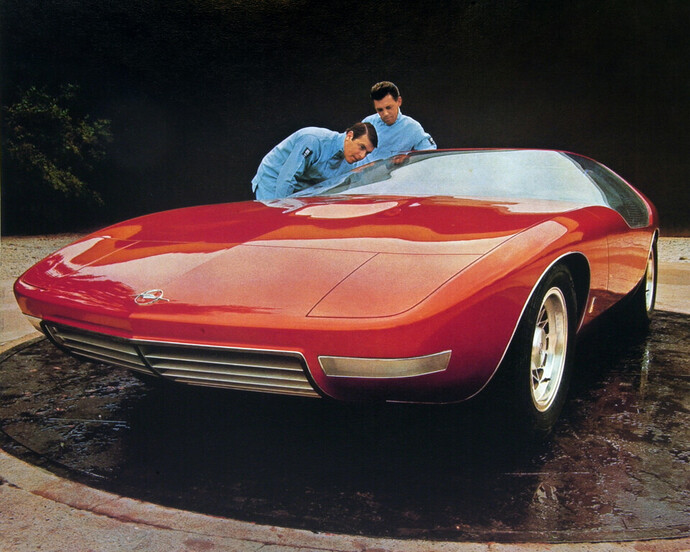IAA Opel CD concept vehicle from 1969. Photo: Autor-Union Mobilitt/Opel
Slender silhouette, high-contrast graphics, dimensions and successful technologies for future models – this is the Opel concept car. The latest concept car, which the Stellantis brand will present to the public for the first time at this year’s IAA Mobility Show in Munich, aims to provide a glimpse into the futuristic design and future of the Opel brand. It’s nice to see in the many eye-catching details: the bright new lightning bolt in the center of the compass at the front and the distinctive lettering at the rear, the tapering profile of the all-electric SUV crossover combined with aerodynamic solutions and clever use of space are just a few examples. Meanwhile, the Opel concept car adds a new chapter to the long history of IAA concept vehicles from Russelsheim.
And it starts off amazing. With the Opel Experimental GT at the IAA Show in 1965, the car was designed entirely in-house. With its tapering “coke bottle” design, flat-taper fascia, bulging fenders, round taillights and distinctive pop-up headlights at the front, the model impresses everyone from the podium, and as a result, Opel produces the Opel GT in just three years after the series.
Inspired by the huge success of the Experimental GT, Opel designers and engineers set out to design the next show car from Rsselsheim. In 1969 the brand then introduced the Opel CD (Coup Diplomat), a two-seater luxury coupe based on the Opel Diplomat. With its body made of fiberglass, a partially removable glass dome instead of doors, 15-inch alloy wheels, an adjustable steering column, a freely hanging instrument panel, adjustable pedals and a center console with a dummy phone, the Opel CD paints visions of the future tangible.
Corsa-based studies: Opel Junior and Opel Scamp
Let’s go back to 1983: 14 years after the release of the Opel CD, the manufacturer chose a completely different approach with the introduction of the Opel Junior. The focus is not on futuristic design, but rather the study must align with sustainable mobility with minimal harm. The drag coefficient is 0.31, which, together with the vehicle’s low curb weight of 650 kg, enables an consumption of just 4.0 liters per 100 kilometres. Based on the Corsa A, the Junior offers space for four people and clever details such as seat covers that double as a sleeping bag. Parts of the dashboard such as the stereo or clock can be removed and used outside the vehicle.
And 10 years later, the best-selling Corsa small car once again forms the basis for the 1993 Opel Scamp study. Thanks to its high ground clearance, the Scamp can be considered the pioneer of the modern SUV. The concept car offers room for up to four people. The rear seats and the load compartment are covered with a fold-down functional surface that can be fully opened. The all-wheel drive approach is also emphasized by special devices in the trunk, which allow two bicycles or other sports equipment to be transported safely.
Monza Concept: Bridge to Electricity
Finally, at IAA 2013, Opel presents the large-door Opel Monza Concept, which offers infotainment and connectivity technologies with LED projections and car-to-car and car-to-car communications. In addition, the concept car builds a bridge towards the increased use of electric vehicles. Its modular architecture allows the integration of different drive alternatives, from plug-in hybrids to hydrogen fuel cells and conventional combustion engines. The IAA Showcase is offered as an electric vehicle with a natural gas range extender. (ohms)
Homepage

“Certified tv guru. Reader. Professional writer. Avid introvert. Extreme pop culture buff.”







More Stories
Samsung Quantum Dot TV: Art meets technology
Pitch: €56m for energy startup Reverion
Plastoplan: Plastics for Energy Transition